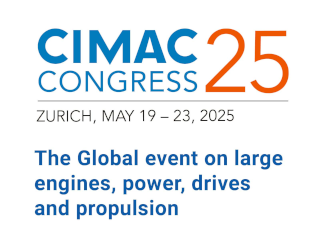2017 closing on improved spot vessel earnings. Firmer trend forecast in the new year
based on world GDP predictions and orderbook profile, writes Michael Hollmann
Hire rates for both container ships and for bulk carriers saw substantial improvements from extremely depressed levels in 2017 and[ds_preview] most brokers, consultants and analysts agree that 2018 should see a continuation of the firmer trend, albeit at different speeds. In container shipping, average charter rate levels are expected to improve slightly although upward momentum is likely to be reined in by a spate of deliveries of ultra large newbuildings. For the dry bulk market, the outlook is considered to be more positive thanks to very low fleet growth last year.
The final weeks of 2017 saw a continuation of the stable trend in container ship charter rates, with the New ConTex even posting a marginal increase and thus defying typical seasonal patterns that normally see rate levels easing between late autumn and Chinese New Year.
Tonnage demand for the largest available ships of 8,000-10,000 TEU did not fall over a cliff as some were expecting, in what reflects the deepsea container lines’ reluctance today to scale back route capacities during winter as they normally do. Hence there was still reasonable fixing activity for ships out of prompt positions and for forward delivery in March and April, brokers said.
One 10,000 TEU ship was reportedly committed to Hapag-Lloyd for a 12-month period at around 25,000 $/day while a slightly smaller units secured above 15,000 $/day for a short flexible period that will allow it to seek new employment possibly at much higher levels in the middle of this year. Demand for older standard 8,500 TEU continued as well although rate levels slipped to around 12,500 $/day.
Underlying demand for container transportation remains on the way up, illustrated by another all-time high of the ISL/RWI container handling index for November. So it appears that trade volumes justify the carriers’ expansive capacity strategy up till now. Operators managed to grow their business without sparking a major rate war throughout 2017, turning in profits from the second quarter onwards with only a few exceptions. However, spot freights and contract rates, too, were declining as the year progressed, hitting critical levels at the end of the year that should prompt carriers to take a more cautions approach to capacity growth.
Based on positive world GDP growth forecasts for 2018 (IMF: 3.7%), there is no reason why container trade growth should weaken from current levels of around +5%. As in the recent past, though, top line trade growth can be expected to yield different results for different vessel segments. Imbalances in supply across all size classes from feeders up to very large vessels already led to a notable disparity in rate developments. For example, handy/feeder vessels of 1,700 TEU were fixing short periods at rates ranging from 8,000 to over 10,000 $/day at the of 2017 whereas conventional panamaxes only achieved mid 7,000’s to low 8,000’s $/day in most cases.
In the big picture, all container ship types were in a better position at the end of 2017 than 12 months prior, as illustrated by the ConTex period assessments with year-on-year improvements in charter market rates between +10.0% (1,100 TEU) and 87% (4,250 TEU, 12 months).
Based on projected orderbook deliveries and capacity reserves from idle vessels, market developments are likely to be varied again across the spectrum of vessels. The consensus among shipbrokers seems to be that smaller vessels below 4,000 TEU are in a relatively favourable position while larger vessels may have more limited opportunities to obtain rate increases due to rising competition from new ultra large vessels.
Deliveries of newbuildings in excess of 10,000 TEU are expected to accelerate from an estimated 67 in 2017 to 89 this year which is going to cause pressure on smaller vessels perhaps down to panamax class through cascading and displacement of ships from their established service loops.
Smaller handy/feeder vessels – especially geared types – clearly enjoy a better outlook judging by the delivery profile, with deliveries especially in the 1,500-2,000 TEU and the 500-1,000 TEU sectors falling sharply this year (to just 10 and 1 units, respectively, according to Alphaliner). The situation will be different next year when newbuilding deliveries are forecast to fall sharply across all sizes, hence 2019 is likely to be the »year of real improvement« in the container market, as one major broker put it.
Michael Hollmann















